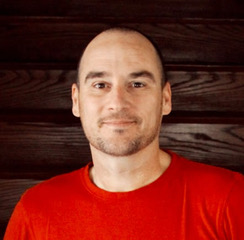Reimagining Leadership
Have you ever tried to roll a triangle? Cavemen figured out long ago that circles make better wheels than pyramids do. This analogy is a clue for movement thinking. If we want our organizations to proliferate as dynamic movements, then we must discover movemental types of leadership systems.
The first challenge for most of us will be to think beyond the triangles of the most commonly used organization charts. Whether you are a senior leader or staff member with leadership oversight, you must be willing to consider an entirely different function from a traditional CEO or executive when seeking to uncork the latent talent available. Reimagining leadership in the structure of the starfish, we certainly face challenges. Still, we can also crack the safe of greater inspiration as we consider the transformational possibilities.
If we want our organizations to proliferate as dynamic movements, then we must discover movemental types of leadership systems.
Phenomenal Jesus movements don’t have the barriers of centralized institutions, which hinder growth through control. They have the feel of a movement, the structure of a network, and the potential to spread like a virus. Here we are now exploring organic systems. Five organic patterns provide a simple structure that can be reproduced in every cell of an organization or missional movement, without constricting the flow of a movement. The challenges are in abandoning the old ways of thinking while resisting our knee-jerk reactions to new ways of doing things.
Peter Block says, “The concept of leadership does not leave much room for the concept of partnership. We need a way to hold on to the initiative and accountability and vision of the leadership idea, and to abandon the inevitable baggage of dominance and self-centeredness.” Every living thing is made up of cells, and the starfish is no exception. Think of the cells of a starfish as circles. Within the starfish leadership structure, the circle is, in the words of Baldwin and Linnea, “essentially a gathering of equals, people who set aside external, hierarchical positions that categorize and separate them and sit down in a ring of chairs with a clearly defined intention or purpose symbolically represented in the middle.”
Phenomenal Jesus movements don’t have the barriers of centralized institutions
The Godhead is a circle! The old-world image of God is that of a singular monarch seated on a throne: a pyramid. The Latin word for God is Deus, not a far cry from Zeus, a primitive image of God that still occupies the imaginations of millions. Your image of God influences your entire life. You become like the God you worship. That’s one of the reasons we have so much Zeuslike leadership.
Deconstructing Leadership
Yet how radically did Jesus deconstruct this pyramid? God came as a vulnerable baby born among an oppressed people in a land occupied by Zeus worshipers. He lived as a simple man of trade, then kick-started his ministry by creating a leadership circle of fishermen and tax collectors. Gradually, he revealed the circle at the center: Father, Son, and Spirit. It took the church centuries to develop the doctrine of the Trinity until finally, the Cappadocian fathers used a word from Greek theater to describe it: perichoresis, which literally means “circle dance.” God is a relationship or dance of equality and interdependence. We are invited into the circle. How could we not model all our leadership on this theological foundation?
We need open circles of equality and interdependence, inviting others in. That is the way of Jesus. In The Permanent Revolution, Alan Hirsch describes it this way: “On closer examination, movements are composed of many circles, or a fractal-like network of networks. Each circle is an independently functioning decentralized network consisting of autonomous and interdependent units. And these tend to lack the hierarchy or structure normally associated with centralized command-and-control organizations.”
The circle changes the leader’s role to that of a facilitator and coach who generates some, but not all, ideas while allowing those in their circle to follow through on concepts and add to and adapt them. The result is not a leaderless church or organization; far from it. The upshot is more and better leadership.
We need open circles of equality and interdependence, inviting others in.
Reshaping Leadership
For a starfish culture to thrive, leaders must reimagine their roles and practices. Several years ago, I was part of a pastoral team that experimented with a form of shared leadership. Up to this point, the church was led in the typical senior-and-associate-pastors structure. I was one of the two associate pastors. The senior pastor was a true shepherd and teacher. He was selfless and sharing. The three of us had diverse gift mixes. We complemented one another tremendously, filling each other’s shortcomings in viewpoint and talent.
Our pulpit voices brought a healthy variety of insight and perspective to the discipling of the members, and the church exploded in growth. It was brimming in creativity, development, and an overall life-changing message. But it all came to a sudden end when the senior pastor finally could no longer handle sharing credit for the wonderful things happening in our midst. He felt a sense of diminishing value and initiated a devastating blowup that split the church. Since then, he has repeatedly confessed his lack of maturity at the time, along with deep regret for causing an end to a great work of the Spirit. Thankfully we have had a healthy, restored relationship for many years now.
Though this pastor had his share of blame in the botched leadership experiment, it was not altogether his fault. Looking back on the situation, we had failed to develop ground rules and necessary structures and systems vital to operating a shared leadership ethos. This omission created opportunities for poor communication and a lack of healthy sharing of information.
Nothing is more difficult to carry out, nor more doubtful of success, nor more dangerous to handle, than achieving a new order of things.
Previously, each of us had experienced only in pyramid leadership structure, which runs on a diminished degree of relational intelligence. It lacks the holistic components that make a living body function. There was no systemic mutual understanding or practical habits to support our desire for shared leadership. Each of us led teams and programs without ground rules and processes. Each of us was, in essence, doing our own thing. The cumulative effect bred inadvertent competition, insecurity, and a feeling of disorientation. We lacked the necessary systems of navigation for the uncharted waters before us. Even a few simple practices would have helped tremendously. Understanding the power of circles would have been the perfect starting place.
Alan Hirsch’s advice from The Forgotten Ways would have been helpful in those days. The problem is that most people see the church as an institution and not an organic movement (a living system). The structures just revert back to default once the pressure of change is alleviated. The fact remains that for this very reason the vast majority of Christian institutions throughout history never renew and change. The institutional systems story informs so much of what we do. Machiavelli was right: “Nothing is more difficult to carry out, nor more doubtful of success, nor more dangerous to handle, than achieving a new order of things.”
A new order of things is indeed what we need for the days ahead.







